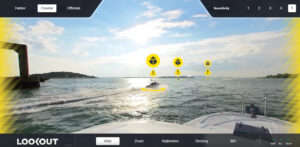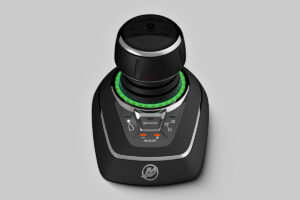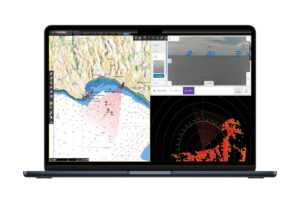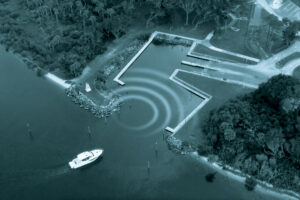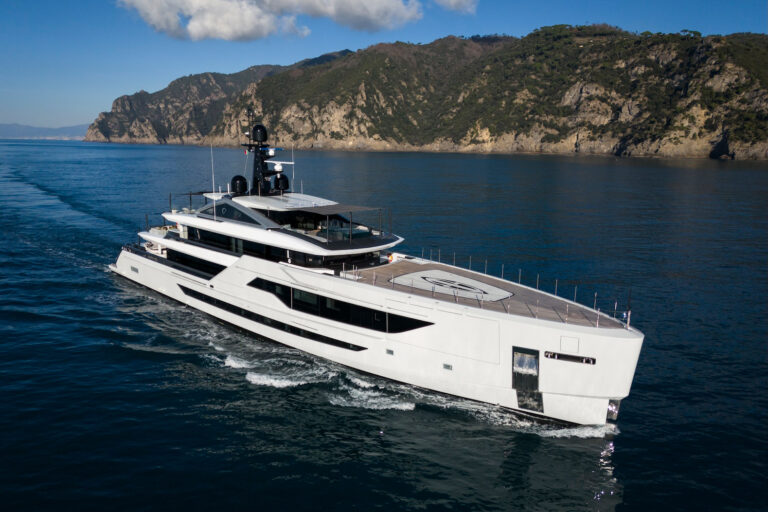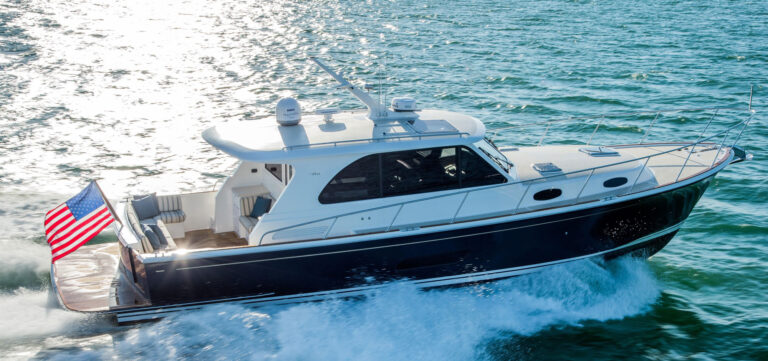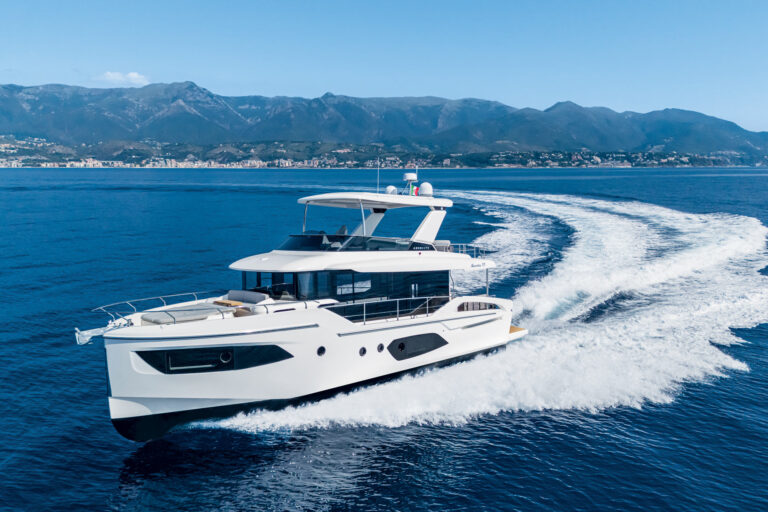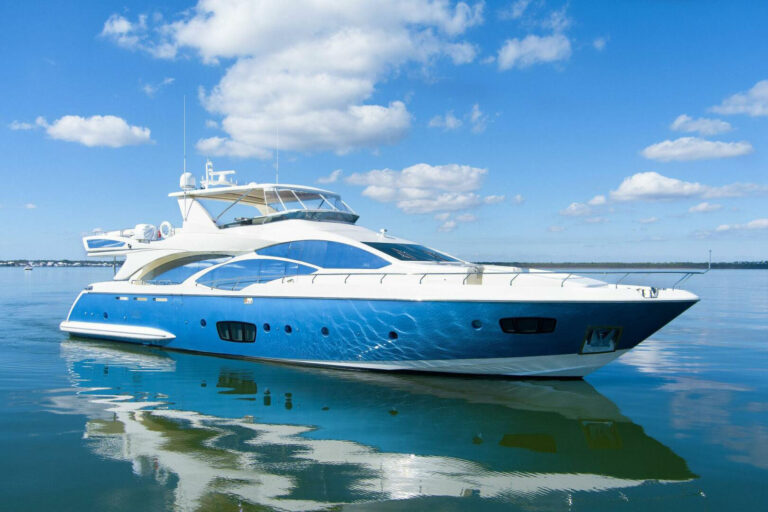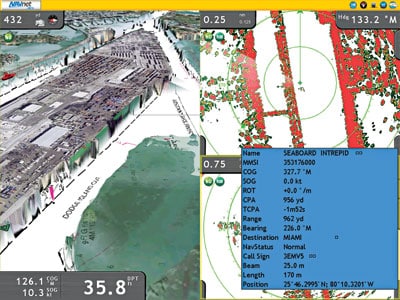
Class B AIS
It’s a timeless scenario: Two vessels converging in the night. Offshore this generally isn’t an issue, provided that both watches are attentive. Trouble brews, however, when tired eyes, confined waters and myriad recreational vessels are involved. Necessity sparked innovation, which led to the Automatic Identification System (AIS), an electronic system that automatically broadcasts — and tracks — germane navigational information between vessels. While AIS has undoubtedly added a significant safety margin, several important questions emerge for yachtsmen: Namely, how visible is your yacht’s AIS signal to a ship’s bridge, and how much safety margin does it provide?
The answer depends largely on where you’re operating and whether you use a Class A or Class B AIS system. While both systems were designed to increase situational awareness and to facilitate direct communication between vessels, they achieve this in different ways, with differing results.
Some background: Class A AIS was primarily designed to help professional mariners avoid ship-to-ship collisions, and the International Maritime Organization (and some local authorities controlling commercial vessels) has mandated that it be installed aboard all SOLAS-class (Safety of Life at Sea) ships. Class A AIS relies on the self-organized, time-division, multiple-access (SOTDMA) system for channel access, which is an automated method that allows different users to efficiently share finite channel access. Class A AIS transmits at 12 watts and updates position and other dynamic navigational data every two to 10 seconds, depending on vessel speed. While Class A information can be overlaid onto some ships’ radars and/or plotters via their electronic chart display and information systems (ECDIS), all Class A units must carry a dedicated minimum keyboard display (MKD) monitor.
Class B AIS was designed as a less expensive alternative to Class A for both commercial and recreational vessels. This black-box system transmits at 2 watts and utilizes the carrier-sense, time-division, multiple-access (CSTDMA) system for channel access. Provided that open channel slots exist, Class B units update their vessel’s navigational information every 30 seconds. Class B units are not required to carry a dedicated monitor; instead, Class B information (NMEA 0183 compatible and sometimes NMEA 2000 compatible) is overlaid onto a multifunction display (MFD). This technology is currently being used widely by some commercial traffic in other countries, and it’s expected that the U.S. Coast Guard will mandate its use on certain types of commercial traffic this year.
Jorge Arroyo, a Coast Guard civilian engineer who has been instrumental in writing AIS regulations, says one of AIS’s main functions is to act like a caller ID on a phone. Capt. Skip Strong of the Penobscot Bay and River Pilots Association wholeheartedly agrees, noting that this is the biggest benefit to commercial traffic. “Instead of just seeing a [radar] target, I have something with a name on it,” Strong says. “I’m not just calling a sailboat off my bow — I’m calling a [specific] vessel.”
Not all professional mariners share enthusiasm for Class B AIS, however. Capt. R. William “Bill” Hughes III, an expert on radar and navigation projects with the Washington State Ferry System, says the introduction of Class B into the AIS system brought with it uncertainty for Class A users. “A fear of Class B is that a false sense of security may lure small-boat operators into riskier navigation decisions, by virtue of the fact that they’re now seen,” he says. “The ability to be seen doesn’t change the maneuverability of larger vessels.”
It’s important to note that signals sent over SOTDMA are prioritized and slotted ahead of those sent over CSTDMA. “Stronger signals, which are usually closer, bump weaker signals,” Arroyo says. “This tends to impact Class B more [than Class A] because they [Class B signals] report at lower power, thus providing a weaker signal. And, because they report at a less [frequent] rate, it’s all in the law of averages as to who bumps whom.” As for areas where this can be a problem, Arroyo points to portions of the lower Mississippi River. As with all other areas, this situation is exacerbated when Class A users fail to update their navigational status when docked or moored, which reduces their broadcast rate to once every 180 seconds and frees up 18 to 90 additional slots.
Screen clutter is another obvious concern. As a ship enters a busy harbor, the number of AIS targets in a given range can quickly mushroom, potentially overpopulating the screen. To compensate, Arroyo says, users can zoom in for tighter views. Strong says Class A users can also apply several different filters to their AIS overlay views (but not their MKD), including ones that minimize targets based on their range, their potential collision danger or whether they are a Class A or Class B user.
While these filters may sound dangerous, it’s crucial to understand that radar operators rely heavily on both their AIS and radar, typically cross-referencing potential threats between their automatic radar plotting aid (ARPA) tool and their AIS. When judgment calls are required, captains, including Strong, trust their radar, which — with an update rate of once every two to 2½ seconds — is far more accurate than their AIS.
Boat speed is also a serious factor. Hughes and Strong say fast-moving vessels can outrun their Class B AIS target, creating confusion. “The one real problem that I have with Class B is its refresh rate,” Strong says. “It’s fine if you’ve got a sailboat going 6 knots, but … if you have a [Class B AIS target] doing 30 knots, in 30 seconds it’s gone a quarter-mile. That’s a substantial chunk of real estate that it’s just covered, without [updating] its information … and if it has made a course change in that time, you may not know it.”
Hughes says that when a fast-moving Class B vessel outruns its target, it creates a serious situation for a ship’s radar operator, because a single boat can appear to be two threats for a number of moments: its outpaced Class B target and its ARPA return. Sprinkle in other nearby Class B users, Hughes says, and the situation quickly compounds itself, especially in fog or rain — dead-common scenarios on both Puget Sound and Penobscot Bay. Because of this, Hughes recommends that Class A AIS units be used on all vessels that travel faster than 5 knots.
Eric Kunz, Furuno’s senior product manager, agrees with Hughes’ assessment. “There are times when a signal gets missed by a transponder,” he says. “If it misses [the Class B signal] the one time, you [might not] see it again for another minute.” Manufacturers can’t legally change the update rates of their Class B units, which must conform to IMO standards.
For recreational boaters, current Class B technology provides the security that heavy metal objects probably know that you’re out there, provided that they haven’t applied any filters. Arroyo says a new type of Class B AIS is expected out this summer with a reporting rate of once every 15 seconds. While it will be interesting to see how this affects channel congestion and target separation, a Class A system nearly guarantees that your yacht will be visible to nearby AIS users, without fear of a skipped transmission, target separation or class-type filtration. Irrespective of AIS, however, it’s crucial to remember Hughes’ point about maneuverability, and the unflinching laws of gross tonnage.

